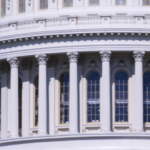CMS Set to Implement New Common Working File Edits to Identify Ambulance Services Provided in Connection with Outpatient Hospital Services that should be bundled to the SNF under Consolidated Billing
On November 2, 2018, the Centers for Medicare and Medicaid Services (CMS) issued Transmittal 2176 (Change Request 10955), which would establish a new series of Common Working File (CWF) edits intended to identify ambulance transports furnished in connection with outpatient hospital services that are properly bundled to the skilled nursing facility under the SNF Consolidated Billing regime. These new edits are set to go into effect on April 1, 2019.
Why these edits are necessary?
In 2017, the HHS Office of the Inspector General conducted an investigation of ground ambulance claims that were furnished to Medicare beneficiaries during the first 100 days of a skilled nursing home (SNF) stay. Under the SNF Consolidated Billing regime, SNFs are paid a per diem, case-mix-adjusted amount that is intended to cover all costs incurred on behalf of their residents. Federal regulations further provide that, with limited exceptions, the SNF’s per diem payment includes medically necessary ambulance transportation provided during the beneficiary’s Part A stay. The OIG’s report was issued in February 2019.
The OIG conducted a review of all SNF beneficiary days from July 1, 2014 through June 30, 2016 to determine whether the beneficiary day contained a ground ambulance claim line. The OIG excluded beneficiary days where the only ambulance claim line related to: (1) certain emergency or intensive outpatient hospital services or (2) dialysis services, as such ambulance transportation would be excluded from SNF Consolidated Billing. The OIG determined that there were 58,006 qualifying beneficiary days during this period, corresponding to $25.3 million in Medicare payments to ambulance suppliers.
The OIG then selected a random sample of 100 beneficiary days for review. The OIG determined that 78 of these 100 beneficiary days contained an overpayment for the associated ambulance claims, as the services the beneficiary received did not suspend or end their SNF resident status, nor was the transport for dialysis. The OIG determined that ambulance providers were overpaid a total of $41,456 for these ambulance transports. The OIG further determined that beneficiaries (or their secondary insurances) incurred an additional $10,723 in incorrect coinsurance and deductibles.
Based on the results of its review, the OIG estimates that Medicare made a total of $19.9 million in Part B overpayments to ambulance suppliers for transports that should have been bundled to the SNFs under SNF Consolidated Billing regime. The OIG estimated that beneficiaries (and their secondary insurances) incurred an additional $5.2 million in coinsurance and deductibles related to these incorrect payments.
The OIG concluded that the existing edits were inadequate to identify ambulance claims for services associated with hospital outpatient services that did not suspend or end the beneficiary’s SNF resident status, and which were not related to dialysis. The OIG recommended that CMS implement additional edits to identify such ambulance claims.
Overview of new claims processing edits
In response to the OIG’s report, CMS issued Transmittal 2176, which implements a new series of claims processing edits to identify ambulance claims associated with outpatient hospital services that should be bundled to the SNF. As noted above, these edits will go into effect on April 1, 2019.
These new claims processing edits are somewhat complicated. In order to properly understand how these claims edits will work, it is helpful to understand that CMS already has claims processing edits in place to identify hospital outpatient claims that should be bundled to the SNF. These CWF edits operate by referencing a list of Healthcare Common Procedure Coding System (HCPCS) or Current Procedural Terminology (CPT) codes that correspond to outpatient hospital services that are expressly excluded from SNF Consolidated Billing. Hospital claims for outpatient services that are submitted with one of these excluded codes bypass the existing CWF edits, and are then sent to the appropriate Medicare Administrative Contractor for further editing and payment. Hospital claims submitted without one of these codes are denied for SNF Consolidated Billing. For convenience, the list of HCPCS and CPT codes excluded from SNF Consolidated Billing is hereinafter referred to as the “Exempted Codes.”
The new edits for ambulance claims will compare Part B ambulance claims to the associated outpatient hospital claim to see whether or not that hospital claim is excluded from SNF Consolidated Billing.
Specifics related to new claims processing edits
Under these new edits, the CWF will reject an incoming ambulance claim whenever the beneficiary is determined to be in an SNF Part A stay if either:
- There is no associated outpatient hospital claims for the same date of service on file; or
- There is an associated outpatient hospital claim for the same date of service on file (paid or denied), but where that outpatient hospital claim does not contain at least one Exempted Code.
When an incoming ambulance claim is rejected by the CWF, it will be sent to the applicable Medicare Administrative Contractor and rejected (Part A Ambulance Providers) or denied (Part B Ambulance Suppliers) using the applicable Claim Adjustment Reason Code/Remittance Advice Remark Code for SNF Consolidated Billing. In other words, the ambulance claim will be denied with an indication that youshould bill the SNF.
The Transmittal contains further instructions that the CWF be updated to identify previously rejected ambulance claims upon receipt of an associated hospital claim for the same date of service that contains an Exempted Code. Once identified, the Shared System Maintainer (SSM) is supposed to adjust the previously rejected or denied ambulance claim. At this point, the nature of that “adjustment” is unclear, i.e., it is unknown whether the SSM will automatically reprocess the ambulance claim for payment. The AAA is seeking additional clarification from CMS on this important point.
Potential concerns for ambulance providers and suppliers
Based on the current experience of hospital providers, the AAA is cautiously optimistic that the new edits can be implemented in a way that proper identifies ambulance transports associated with hospital outpatient claims that should be bundled to the SNF vs. those that correctly remain separately payable by Medicare Part B.
However, the AAA has some concerns with the manner in which CMS intends to apply these edits. Ambulance providers and suppliers are typically in a position to submit their claims earlier than the corresponding hospital, many of which submit claims on a biweekly or monthly cycle. This creates a potential timing issue. This timing issue arises because the edits will reject any ambulance claim that is submitted without an associated hospital claim on file. In other words, even if the hospital outpatient service is properly excluded from SNF Consolidated Billing, the ambulance claim will still be rejected if it beats the hospital claim into the system. The hope is that CMS will subsequently reprocess the ambulance claim once the hospital claim hits the system. However, at this point in time, it is unclear whether these claims will be automatically reprocessed, or whether ambulance providers and suppliers will be forced to appeal these claims for payment.
One option available to ambulance providers and suppliers would be to hold these claims for a period of time, in order to allow the hospitals to submit their claims. By waiting for the hospital to submit its claim, you can ensure that your claims will not be denied solely due to the timing issue. This should eliminate the disruption associated with separately payable claims being rejected and then subsequently reprocessed and/or appealed. It would also give you a degree of certainty when billing the SNF for claims that are denied for SNF Consolidated Billing. However, holding claims carries an obvious downside, i.e., it will disrupt your normal cash flow.
To summarize, the implementation of these new edits will force ambulance providers and suppliers to rethink their current claims submission processes for SNF residents. Ambulance providers and suppliers will need to make a decision on whether to hold claims to minimize the potential for problems, or to continue their existing submission practices and deal with any issues as they arise.
AAA webinar on new SNF Consolidated Billing edits
March 27, 2019 | 2:00 PM Eastern
Speakers: Brian Werfel, Esq.
$99 for Members | $198 for Non-Members
Join AAA Medicare Consultant Brian Werfel, Esq., to go over the new SNF Consolidated Billing edits that go into effect April 1, 2019. These edits are being implemented by CMS in response to 2017 investigation by the HHS Office of the Inspector General that determined that CMS lacked the appropriate claims processing edits to properly identify ambulance transports provided in connection with hospital outpatient services that are not expressly excluded from SNF PPS. The implementation of these new edits will force ambulance providers and suppliers to rethink their current claims submission processes for SNF residents. Ambulance providers and suppliers will need to make a decision on what to do with these claims moving forward. Sign up today to make sure your service is ready!
Register for the Webinar












